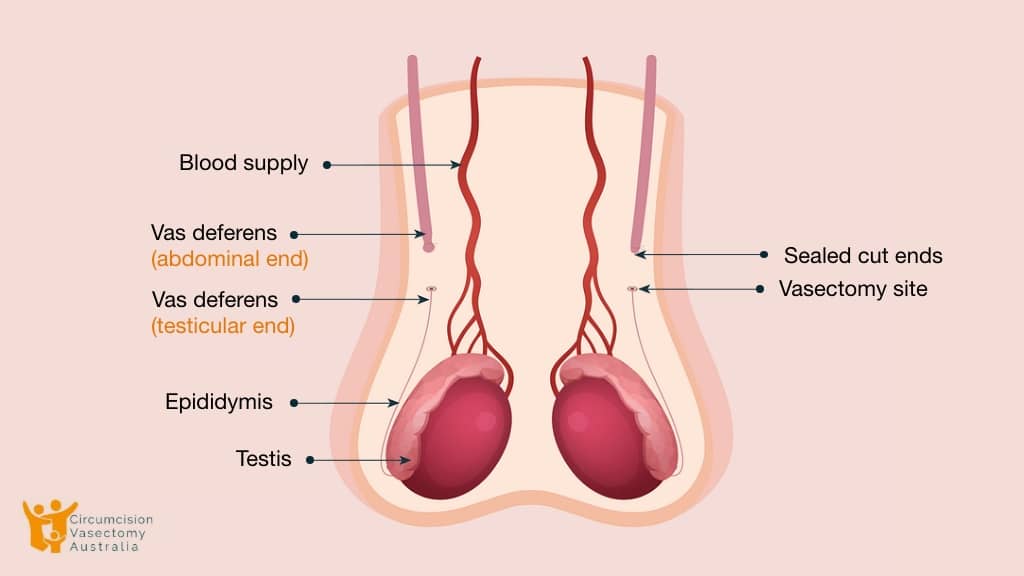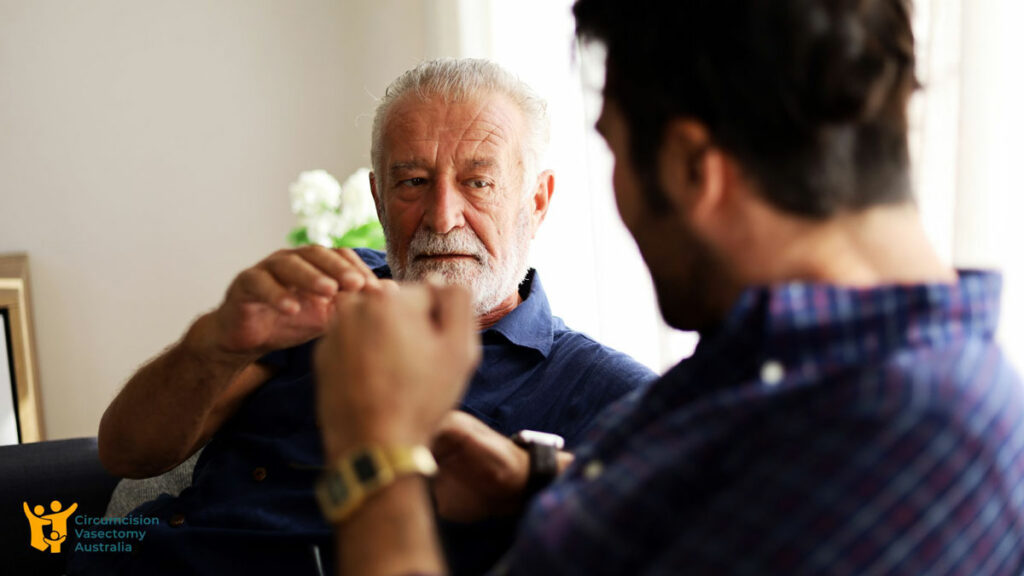Vasectomies are one of most effective methods of birth control, with a success rate of over 99%. The one-time procedure has benefits over other forms of contraception and is becoming more common.
Medicare data for the financial year of 2022-23 showed that over 38,000 Australian men had a vasectomy, with 9,802 of those men being residents of the state of Victoria. More Melbournian men are taking up this procedure, particularly those in their 40s, due to its convenience as a birth control method.
Getting a vasectomy in Melbourne can still be daunting, and no doubt you’ll have many questions about the procedure. We’ve compiled a list of FAQs you may want the answers too before deciding whether you want to proceed.
If you would like to speak to a doctor before performing your vasectomy in Melbourne, you can book a consultation to find out more.
What is a vasectomy?
A vasectomy is a contraceptive procedure that renders the patient sterile. The procedure involves cutting the vas deferens tubes, so sperm does not travel to the outside world.
It is a permanent procedure so taking the time to research and speak with your loved ones is recommended before you make your decision.
With a success rate of over 99%, it is one of the most effective forms of birth control – and most convenient. Unlike IUDs and the implant which need to be replaced every few years, or the pill which must be taken every day, getting a vasectomy in Melbourne is a one-time procedure.
Unlike condoms however, a vasectomy does not prevent sexually transmitted infections (STIs). It is important that you still take precaution if you and your partner have not been tested, or you have multiple sexual partners.
What types of procedures are there?

There are multiple types of vasectomy procedures. These include the traditional, the open-ended procedure, the fascial interposition method, and the no scalpel vasectomy. All procedures are operated after applying local anaesthetic so there is no pain.
At Circumcision Vasectomy Australia, we combine different methods to make sure having a vasectomy in Melbourne is safe with minimal discomfort. We combine the no scalpel, open-ended, fascial interposition methods.
The traditional vasectomy
For the traditional procedure, a scalpel is used to make two large incisions or one central incision to cut and seal the vas deferens tubes. The tubes are then sealed off. This method takes around 25 minutes.
The open-ended method
In the open-ended method, a 0.5cm opening is made in the front of your scrotum. Your doctor will then cut the vas deferens and seal the penile end of the tubes while leaving the testicular end open. Your doctor will close the opening in the scrotum by pressing the skin edges together. This method takes around 20 minutes.
The fascial interposition method
For the fascial interposition method, your doctor will make a 0.5cm opening in the front of your scrotum. Each vas deferens tube will be cut, and then a layer of fascia (internal skin) will be used to separate the penile and testicular ends of the vas deferens. This method takes 20 minutes and increases the success rate to 99.9%.
The no-scalpel vasectomy
Like the open-ended and fascial interposition method, a 0.5cm opening will be made in the front of your scrotum. Each vas deferens will be cut, and no stitches will be required due to the no-scalpel nature of this method. The no-scalpel procedure can take 15 minutes.
Are vasectomies reversible?
Getting a vasectomy in Melbourne will be a permanent form of contraception. It is possible to reverse the procedure through a vasovasostomy operation, but this operation is a lot more complex and is not guaranteed to be successful.
This operation is far more expensive and is not covered under Medicare, so it is important that you are sure of your decision to get a vasectomy. Vasovasostomies are more successful the sooner the reversal is done, and the level of recovery of sperm is gradual and may not ever reach the level it was before.
Some men choose the alternative of undergoing a sperm extraction procedure followed by IVF (in-vitro fertilisation).
Will I still be able to ejaculate?
You will still be able to ejaculate after getting a vasectomy in Melbourne. The difference is that there will not be any sperm present in your ejaculation after your vasectomy has taken effect.
How long does it take before my semen has no sperm?
After your vasectomy in Melbourne, it can take three months or longer for there to be no sperm in your ejaculate, so be sure to use other forms of birth control in this time. You will need to submit a sample after this time so that your sperm count can be assessed.
How do I prepare for my vasectomy?
Be sure to stop any blood thinning medication at least 7 days before getting a vasectomy in Melbourne. You should discuss this beforehand with a GP or specialist.
Before you come in for your vasectomy procedure, please shave the front and both sides of the scrotum. This will make the procedure easier.
You may also want to take a shower as you will not be able to do so for 24 hours after your surgery.
How long does it take to recover after a vasectomy?

Recovery time differs on the type of procedure you choose. No-scalpel vasectomies will have an easier aftercare experience.
Discomfort and swelling may be experienced in your scrotum area for a few days after your surgery. You can take over-the-counter painkillers such as paracetamol, use ice packs, and wear supportive and tight underwear to help manage this.
For a smooth recovery, make sure to rest for 2 days after your surgery. Avoid intense exercise or contact sports for 4 weeks, and any heavy lifting for 2-4 weeks. With the no-scalpel method, you can start light physical activity after 2 weeks.
You can resume sexual activity after a week, and shower after 24 hours – but keep your wound as dry as possible. Do not swim or take a bath for at least 2 days after your procedure.
What are the risks of a vasectomy?
Mild pain, swelling, and bruising is normal after your vasectomy, and this should cease after a few days.
Some fewer common complications include a scrotal haematoma, which is a large bruise in your scrotum. The chance of this can be greatly minimised by avoiding heavy lifting – so if your work requires this, please take time off after your procedure.
Infection is very unlikely but can occur after a vasectomy as with all surgeries. This can be resolved by taking oral antibiotics.
Post Vasectomy Pain Syndrome (PVPS) is a rare occurrence, but it can happen. In most instances, the pain will resolve itself eventually, however, in very few cases specialist review is necessary.
Finding the right clinic for your vasectomy procedure
At Circumcision Vasectomy Australia, we pride ourselves in making sure your vasectomy in Melbourne is safe and minimally invasive. We specialise in no-scalpel vasectomy procedures which guarantee a quicker recovery time.
We use a nerve block so that the only pain felt during our 20-minute no-scalpel surgery is the sting of the local anaesthetic.
Our 24hr hotline is available to you after your surgery for any aftercare concerns, providing you support and ease of mind in your recovery process. Book a consult with our experienced doctors today to learn more, or book a procedure now.




